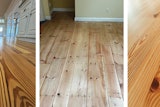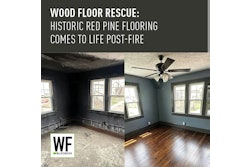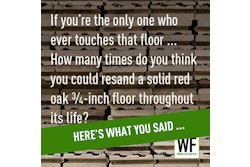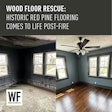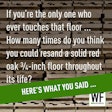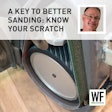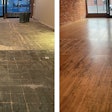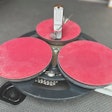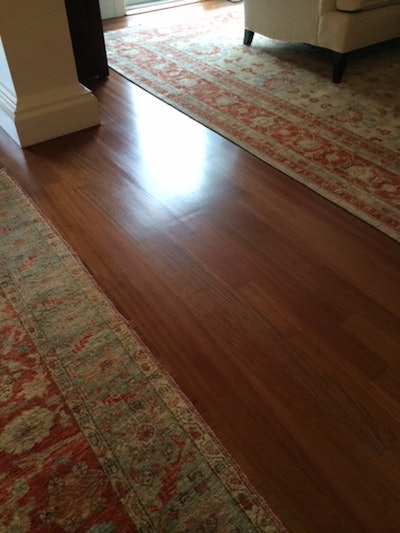
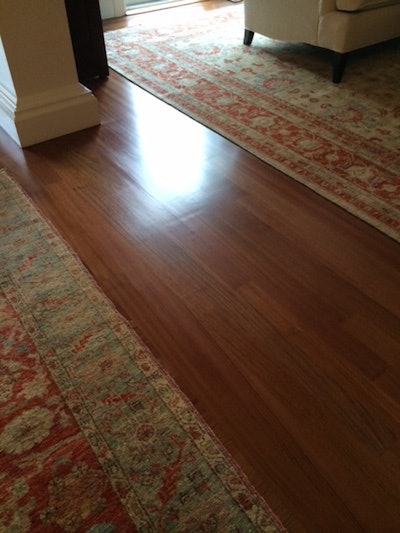 A bad Brazilian cherry refinish job that had been done by another company.
A bad Brazilian cherry refinish job that had been done by another company.
No.
Nope.
Not even close.
No, no, no.
And no.
At one of the technical schools, Frank Kroupa, who was the NWFA technical director, mentioned that at his workplace they used to have a recipe book for sanding and finishing jobs. Meaning, they would write the sequence of sanding and the exact process done on the floor for each job. For example, if they sanded and stained a red oak floor with ebony and urethane, they recorded the process in their recipe book. Next time they tackled the same scenario, they would refer to the recipe in the book. That is, of course, if the job turned out beautiful. Instead of figuring out what to do on each job, they just went back to the book.
When you start a sanding job, do you think ahead about what grit to use first? What grit to use last? What kind of finish you will apply to the floor? Having a recipe book or a system takes away from the figuring out process and develops uniformity and consistency in your work.
How often do I hear the following and smile to myself? “I need to stain this maple/Brazilian cherry floor. I’ve never done it before, but I’ve had no problems staining oak all these years...”
Many factors go into play when deciding how to sand a floor. One of them is the wood species. Sanding a closed-grain wood like maple is nothing like sanding a porous-grain wood like red oak. You must understand that if you want to get better doing what you do, you need to understand the fundamentals of your profession. One of them is that sanding is scratching. Without going into the science of abrasives (sandpaper) too much, please understand that what is glued to your 50-grit belt or 36 edger disc are small crushed minerals. Imagine those tiny rocks, sharp and pointy, being run on the wood floor with your powerful machines—that is, scratching. Different types of minerals have different shapes in how they look in the beginning and how their shape changes as you use them on the floor. 2,000-grit minerals look more like flour, whereas 60-grit minerals look like granulated sugar. There are different minerals used on abrasives like aluminum oxide or silicone carbide. Each mineral will behave differently and is designed for specific applications. That is why we talk about a scratch pattern when we teach wood sanding. So, putting a 50-grit edger disc on your Brazilian walnut (ipé) floor will produce a very different surface than if you were to put the same edger disc on a red oak floor.
 The same floor after we resanded and refinished it.
The same floor after we resanded and refinished it.
· Wood anatomy: What wood am I sanding? What is the structure of the wood, the grain, the cells?
· Abrasive science: What will my disc, belt or screen do to the floor?
· Equipment: 80-grit on my big machine going with the grain will produce a different scratch pattern than 80-grit on my edger, which is a spinning disc with a different rpm, weight and scratch pattern. See where I am going with this?
· The finish: Is it a matte water-based finish that will hide my fine scratches or a gloss oil-base over a dark stain? What is in the finish? How is it made and how does it behave once applied?
· Scratches: What can you expect for light reflection and finish sheen? Why do you see some scratches on some jobs but not all?
To become a great sander and finisher, you need to educate yourself about the ins and outs of this amazing art. Developing yourself will get the word out that you are the man or the woman for the job in your area. Understand your profession and master it.
The alternative is to keep charging $2 a square foot and seeing all the good jobs going to your competition.










